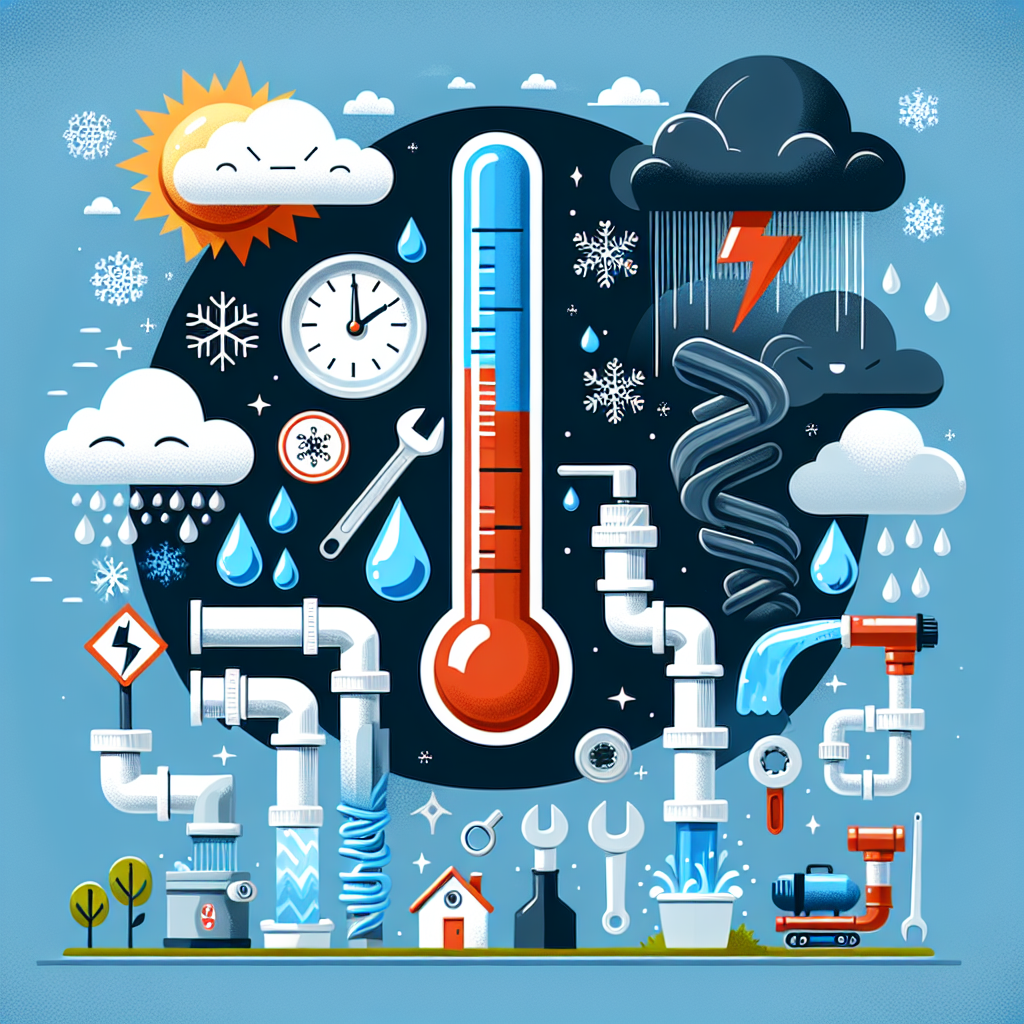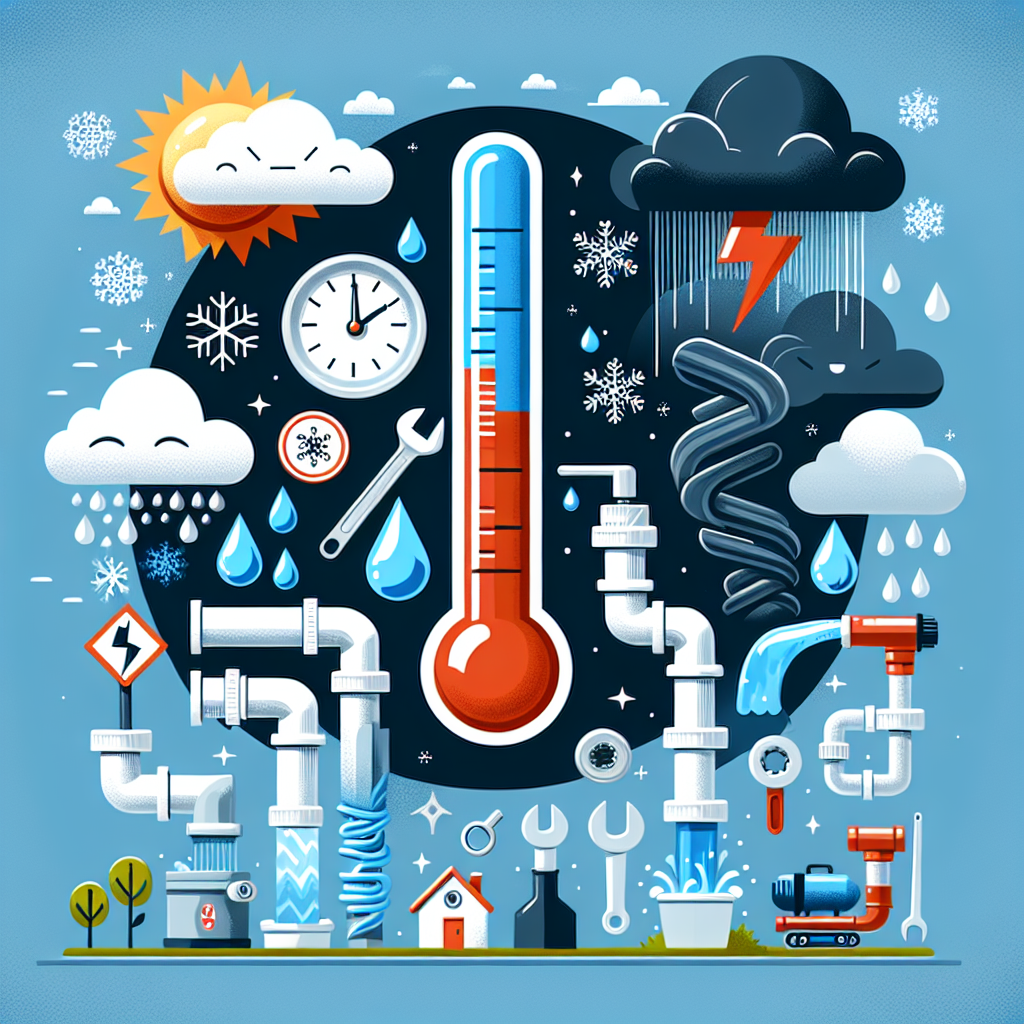Living in an area with extreme weather conditions, such as scorching summers or freezing winters, can have a significant impact on your plumbing system. The fluctuating temperatures, excessive moisture, and potential for severe weather events can put a considerable strain on pipes, causing them to crack, leak, or burst. Furthermore, the constant exposure to humidity or excessive heat can accelerate the deterioration of plumbing components, leading to costly repairs and inconveniences. In this article, we will explore the ways climate can impact your plumbing system and provide valuable insights on how to mitigate potential problems.
Introduction
Climate plays a significant role in the functionality and longevity of plumbing systems. From extreme temperatures to excessive rainfall and high humidity levels, various climate factors can affect the performance of pipes, drains, and water supply. In this article, we will explore how different climate conditions can impact plumbing systems and discuss the potential issues that may arise.
Extreme Temperatures
Freezing Temperatures
Extreme cold temperatures can pose a serious threat to plumbing systems. When water freezes, it expands and exerts pressure on pipes, leading to potential cracks or bursts. This can cause water leaks and disrupt the overall functioning of the plumbing network. To prevent freezing pipes, it is essential to insulate them properly and ensure that there are no exposed areas vulnerable to cold drafts.
Hot and Humid Climates
In hot and humid climates, plumbing systems face a different set of challenges. High temperatures can cause pipes to expand, potentially leading to leaks or bursts. Moreover, the humidity in the air can contribute to the growth of mold and mildew in plumbing fixtures or ductwork. Regular maintenance and inspection are crucial to address any issues caused by the hot and humid climate.
Moisture and Rainfall
Excessive Rainfall
Excessive rainfall can overwhelm drainage systems and put plumbing networks under pressure. Flooding can occur when the capacity of the drainage system is exceeded, leading to water entering basements or low-lying areas. This can result in damage to the plumbing infrastructure, including pipes, pumps, and sewer lines. Proper maintenance and the installation of adequate drainage systems are essential in areas prone to heavy rainfall.
High Humidity Levels
High humidity levels can also impact plumbing systems. The moisture in the air can condense on the surface of pipes and cause them to corrode over time. Additionally, the increased humidity can facilitate the growth of bacteria and mold in plumbing fixtures. Regular cleaning and maintenance can help mitigate the effects of high humidity and prevent potential damage to the plumbing infrastructure.

Ground Conditions
Expansive Soils
Certain areas have expansive soils, which expand and contract with changes in moisture content. This movement can exert pressure on buried pipes, leading to cracks or breaks. Plumbing systems in regions with expansive soils need to be designed and installed with proper consideration of soil movement. Flexible piping materials and careful ground preparation can help minimize the impact of expansive soils.
High Water Table
A high water table refers to the level at which groundwater lies close to the surface. In such conditions, plumbing systems can face challenges, as the groundwater can seep into basements or crawl spaces. This can cause water damage to pipes and affect the overall structural integrity of the building. Utilizing waterproofing techniques and installing appropriate drainage systems can help mitigate the issues related to a high water table.
Water Supply
Quality of Water
The quality of the water supply can vary depending on the climate region. In some areas, the water may contain a high concentration of minerals or contaminants, which can result in the buildup of sediment or scale in pipes and fixtures. Regular testing and water treatment can help maintain the quality of the water supply and prevent potential issues caused by poor water quality.
Water Scarcity
In regions experiencing water scarcity, plumbing systems need to be designed with a focus on water conservation. Water-saving fixtures and technologies, such as low-flow toilets and faucets, can help reduce water consumption. Additionally, proper maintenance and leak detection can prevent water loss and ensure efficient use of the available water resources.
Drainage
Heavy Rainfall and Flooding
Heavy rainfall can overwhelm drainage systems, leading to flooding and potential damage to plumbing infrastructure. Inadequate or clogged drains can result in standing water and cause sewer backups or basement flooding. Regular inspection and maintenance of drainage systems are crucial in preventing or addressing issues arising from heavy rainfall and flooding.
Inadequate Drainage Systems
In areas with inadequate drainage systems, a lack of proper water flow can cause stagnant water to accumulate around plumbing fixtures or in crawl spaces. This can result in the growth of mold, damage to pipes, and unpleasant odors. Ensuring the installation of efficient and properly designed drainage systems is essential to prevent these issues and maintain the functionality of plumbing networks.
Corrosion
High Humidity and Salt Air
High humidity levels, combined with the proximity to salt air near coastal regions, can accelerate the corrosion process in plumbing systems. Corroded pipes can leak or burst, causing significant water damage and necessitating costly repairs. Regular inspection and maintenance, along with the use of corrosion-resistant materials, can help mitigate these risks and extend the lifespan of plumbing infrastructure.
Contaminated Water Sources
Certain regions may have water sources contaminated with chemicals or other pollutants. The presence of these contaminants can corrode pipes and degrade plumbing fixtures over time. Regular water testing and filtration systems can help alleviate the impact of contaminated water sources and ensure the longevity of plumbing systems.
Vegetation and Roots
Tree and Plant Root Intrusion
In some cases, tree and plant roots can intrude into plumbing systems, seeking a source of water. These roots can penetrate pipes and cause blockages or damage, disrupting the flow of water and wastewater. Regular inspection and proper landscaping around plumbing infrastructure can help prevent root intrusion and maintain the integrity of the plumbing network.
Clogs and Damage
Vegetation and debris, such as leaves or twigs, can also contribute to clogs and blockages in drainage systems. These obstructions can lead to sewer backups or stagnant water, posing health hazards and damaging plumbing fixtures. Regular cleaning and maintenance, combined with the use of strainers or guards to prevent debris buildup, can help address these issues.
Infrastructure Age and Quality
Old and Deteriorated Pipes
Aging infrastructure is a common issue in many regions, with older pipes becoming more prone to leaks, breaks, or corrosion. The material composition and construction methods of older pipes may not meet modern standards, making them susceptible to failure. Regular inspections, repairs, and, if necessary, replacement of aging pipes are necessary to ensure the reliability of plumbing systems.
Inadequate Construction
Inadequate construction practices can also affect the long-term performance of plumbing systems. Poorly installed pipes or improper connections can result in leaks, low water pressure, or frequent blockages. Following proper construction guidelines and employing experienced professionals during installation can help mitigate the impact of inadequate construction on plumbing infrastructure.
Compliance and Building Codes
Climate-Related Regulations
To address the impact of climate on plumbing systems, many regions have implemented specific building codes and regulations. These regulations aim to ensure that plumbing infrastructure is designed and installed to withstand the effects of climate conditions, such as freezing temperatures or excessive rainfall. Compliance with these regulations is essential to prevent issues and maintain the functionality of plumbing systems.
Environmental Impact
Plumbing systems also have an environmental impact, and climate-related considerations can help mitigate this impact. Implementing water-saving technologies, promoting water conservation practices, and utilizing eco-friendly materials can contribute to reducing the ecological footprint of plumbing systems. Following the environmentally conscious building codes and practices can help create sustainable plumbing infrastructure.
In conclusion, climate greatly affects plumbing systems, and understanding the potential challenges is essential for maintaining the functionality and longevity of plumbing infrastructure. By taking appropriate measures to address issues related to extreme temperatures, moisture and rainfall, ground conditions, water supply, drainage, corrosion, vegetation and roots, infrastructure age and quality, compliance with building codes, and environmental impact, we can ensure the reliability and efficiency of plumbing systems in various climate conditions.

